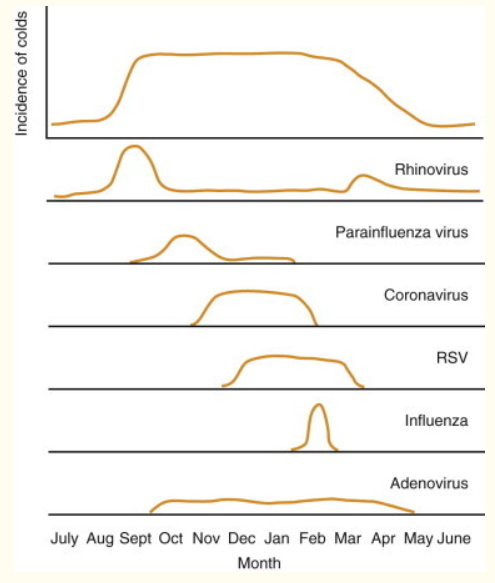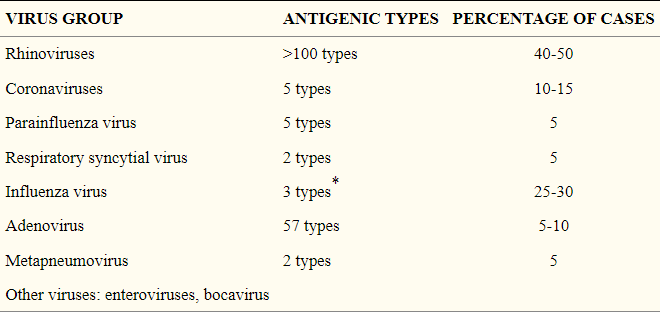By: MSgt Dela Calzada
The common cold, both bane of our IDMT existence and star-crossed lover. The ultimate diagnosis we are tired of treating, yet also the best filler for our patient encounter sheets.
How much do we really know about this illness?
Will we ever find a cure?
What does the future of the common cold look like?
Thought to have been an illness caused by prolonged exposure to lower outside temperatures, our treatment and prevention of this “catch-all” illness has transformed to breaking the chain of infection. Its symptoms and perceived treatments have been described in ancient texts dating before the 16th century BCE within Egyptian papyrus. Some of the more obscure treatment options included bloodletting, concoctions of wolf liver in wine, roasted mouse, spermaceti oil (sperm whale organ), turpentine, and a plethora of herbal mixtures. However, with the prolonged presence of this
illness, some remedies seemed to be effective and later became the basis of modern medicine.
For 3000 years, the plant Ma Huong has been made into tea in China. This herbal drink has been proven to produce decongestant properties. Chicken soup has been recommended by both mothers and physicians, and is now
known to contain another confirmed decongestant called cystine.
Nowadays, we rely on our trusty arsenal: the cold pack! This fancy little gadget provided by IDMTs comes in a variety of medications usually comprised of a decongestant, a nonsteroidal non narcotic pain med, and a topical numbing agent (throat lozenges). Even with centuries of therapeutic trial and errors, the common cold persists. We now know that there are over 200 different viruses that can cause the common cold. This number is exponentially multiplied due to the numerous strains of each virus identified and viral mutations.
What makes the common cold so common?
The incidence of a cold seems to cover the whole year except for a break in the summer time. The table below shows the spread of the common cold viruses and their respective presence throughout a year.

If we are to identify which of the common cold virus is the most likely culprit of your patient’s illness, Rhinovirus would be the best bet.
The table below summarizes the virus groups and their percentage of confirmed cases.

A single cold virus can have 16 million offspring within the course of a day. Couple that with viral transmission through airborne droplets and direct contact to secretions and fomites, the common cold becomes an unstoppable plague. No definitive cure has been proven to this day, often due to the rapid mutations and extensive genotype of the viruses.
New research, however, has been focusing on genetic sequencing of Rhinoviruses. Researchers found that all genetic information is contained in a cloverleaf-shaped end of an RNA strand. The implications of this research could prove useful in creating a vaccine that can target Rhinoviruses.
A different approach has been undertaken, known as host-directed therapy (HDT), which targets host-cell proteins that viruses need in order to replicate and cause infection. According to a study published
in the Journal of Nature Microbiology, researchers at Stanford University and the University of California in San Francisco found that temporarily disabling a single noncritical protein in cells could stop the replication of viruses including the Rhinovirus that causes most common colds. Microbiologists have targeted a human gene that produces a protein
essential to the function of numerous enteroviruses to include Rhinoviruses.
Switching gears, further studies refocused on the common cold and how it can be used to combat COVID-19. Altering a virus to target specific diseases, ensuring that the replication information is removed, led to viral vector type of treatment. This is not new, proven already with the Herpesvirus against melanoma, measles for bone marrow cancer, poliovirus against brain tumors, and Zika virus against brain cancer.
Just this month, developing studies show that rhinovirus
(caused by a closely related coronavirus) could affect T Cells and attack COVID-19. This information could lead to a possibility that T Cells can be used as additional protection. This means that either a recent infection with a legacy Coronavirus can halt an incoming COVID-19 infection.
Although there seems to be no decisive cure for the common cold, the future seems bright with our friendly AF Form 4336 patient filler. Whether it stays to infect more of our patients or an agent to protect our people, the common cold will remain common!

References:
BBC News. (2022, Jan 10). Covid-19: Common Cold May Give Some Protection, Study
Suggests. https://www.bbc.com/news/health-59911257
Imperial College London. (2022, Jan 12). T Cells From Common Colds Cross-Protect Against
Infection With SARS-Cov-2. https://www.sciencedaily.com/releases/2022/01/220110103245.htm
Wein, Harrison. (2009, Apr 19). Understanding a Common Cold Virus. https://www.nih.gov/news-events/nih-research-matters/understanding-common-cold-virus
Turner, Ronald. (2014, Oct 31). The Common Cold. https://www.ncbi.nlm.nih.gov/pmc/articles/PMC7151789/

